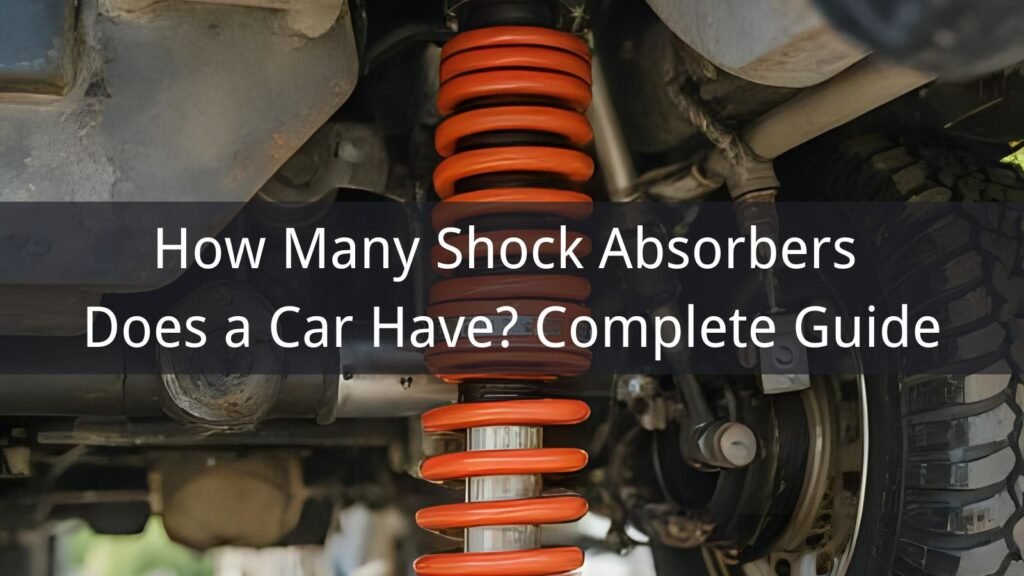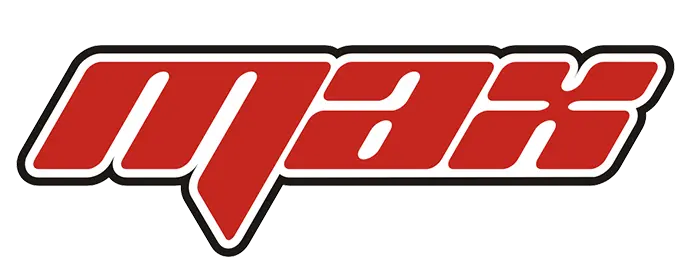
Most cars have four shock absorbers or struts – one for each wheel. However, the exact number and configuration varies by vehicle type, suspension design, and specific applications. Understanding your vehicle’s shock absorber configuration is essential for proper maintenance, replacement planning, and performance optimization.
Table of Contents
Standard Shock Absorber Configuration
The answer to “how many shock absorbers does a car have” is typically four – one shock absorber or strut for each wheel. This standard configuration provides balanced damping control for all four corners of the vehicle, ensuring optimal handling, comfort, and safety across various driving conditions.
However, the terminology can be confusing because many modern vehicles use struts instead of traditional shock absorbers. Struts serve the same damping function as shock absorbers but integrate additional structural and spring support functions. Whether your vehicle has shocks or struts, the count remains four for most passenger vehicles.
Understanding your vehicle’s specific configuration helps with maintenance planning and ensures proper shock absorber system performance throughout the vehicle’s service life.
| Vehicle Category | Typical Shock Count | Configuration | Special Considerations |
|---|---|---|---|
| Passenger Cars | 4 | Front struts + rear shocks/struts | Mixed systems common |
| Pickup Trucks | 4 | 4 shock absorbers | May have helper springs |
| SUVs/Crossovers | 4 | Varies by design | Load-leveling systems possible |
| Sports Cars | 4 | Performance-oriented dampers | Often adjustable systems |
Vehicle Type Variations
While four dampers represent the standard configuration, different vehicle types implement various approaches to suspension damping. Understanding these variations helps identify the specific components your vehicle requires for optimal performance.
Passenger Car Configurations
Most passenger cars use a mixed configuration with MacPherson struts in the front and either shock absorbers or struts in the rear. This approach balances space efficiency in the engine bay with optimal suspension geometry and performance characteristics.
Front-wheel-drive vehicles commonly employ struts all around due to space constraints and cost considerations. The integrated design of struts allows for compact packaging while providing both damping and structural support functions.
Truck and SUV Applications
Trucks and larger SUVs often use traditional shock absorbers on all four corners, working in conjunction with separate springs. This configuration provides superior durability and adjustability for varying load conditions and towing requirements.
Heavy-duty applications may incorporate additional damping elements such as steering stabilizers or supplemental shock absorbers for trailer sway control, increasing the total damper count beyond the basic four.
Performance Vehicle Specialization
Performance-oriented vehicles may use sophisticated damping systems including adjustable shock absorbers or advanced electronic systems. Our coilover solutions provide the adjustability and performance characteristics demanded by enthusiast applications.
Suspension System Types and Shock Count
The suspension system design directly influences the number and type of damping components required. Different approaches to suspension geometry and load management result in varying shock absorber configurations.
MacPherson Strut Systems
MacPherson strut suspensions integrate the damper, spring, and structural elements into a single assembly. Vehicles with this system front and rear will have four struts total, each serving multiple functions within the suspension geometry.
The hard chrome-plated piston rod within each strut provides the damping function while supporting structural loads and maintaining precise wheel alignment.
Double Wishbone Systems
Double wishbone or short-long arm suspensions typically use separate shock absorbers working with independent spring elements. This configuration allows for more precise tuning of damping characteristics and suspension geometry optimization.
Solid Axle Configurations
Vehicles with solid rear axles, common in trucks and some SUVs, use shock absorbers mounted between the axle housing and vehicle frame. While still maintaining four total dampers, the mounting and operational characteristics differ from independent suspension systems.
Multi-Link Systems
Advanced multi-link suspensions may incorporate additional damping elements beyond the four primary shock absorbers. These systems might include supplemental dampers for specific motion control or electronic systems with multiple actuators.
Specialized Applications and Extra Dampers
Certain vehicles and applications require additional damping elements beyond the standard four-shock configuration. Understanding these specialized systems helps identify all components requiring maintenance and replacement.
Steering Stabilizers
Many trucks, SUVs, and off-road vehicles incorporate steering stabilizers – specialized shock absorbers designed to control steering wheel oscillations and improve directional stability. These additional dampers are typically mounted on the steering linkage.
Load-Leveling Systems
Vehicles equipped with load-leveling suspension may have additional shock absorbers or air springs with integrated damping. These systems automatically adjust ride height and damping characteristics based on load conditions.
Electronic Suspension Systems
Advanced electronic suspension systems may incorporate multiple damping elements per wheel, including primary shock absorbers and secondary actuators for active suspension control. These sophisticated systems can significantly increase the total damper count.
| System Type | Base Dampers | Additional Components | Total Count |
|---|---|---|---|
| Standard Configuration | 4 | None | 4 |
| With Steering Stabilizer | 4 | 1 steering damper | 5 |
| Load-Leveling System | 4 | 2-4 leveling dampers | 6-8 |
| Active Suspension | 4 | 4-8 actuators | 8-12 |
Racing and High-Performance Applications
Competition vehicles may use additional shock absorbers for specific functions such as anti-roll control or specialized damping for different racing conditions. These applications can significantly exceed the standard four-damper configuration.
Replacement Considerations by Configuration
Understanding your vehicle’s shock absorber count and configuration is crucial for proper replacement planning. Different systems require varying approaches to maintenance timing and component selection.
Paired Replacement Strategy
While vehicles typically have four shock absorbers, replacement should generally be performed in pairs to maintain balanced handling characteristics. Front pairs and rear pairs should be replaced simultaneously to prevent uneven damping that could affect vehicle stability.
The piston rod assembly in each damper wears at similar rates when subjected to comparable operating conditions, making paired replacement the most effective maintenance approach.
Complete System Replacement
For optimal performance and handling balance, replacing all four shock absorbers simultaneously is often recommended, especially for high-mileage vehicles or performance applications where consistent damping characteristics are critical.
Mixed System Considerations
Vehicles with mixed shock/strut configurations require careful attention to component specifications and replacement timing. Front struts and rear shocks may have different service intervals and replacement procedures.
Identifying Your Vehicle’s System
Properly identifying your vehicle’s shock absorber configuration ensures correct maintenance procedures and component selection. Several methods help determine the exact number and type of dampers on your vehicle.
Visual Inspection Methods
Physical inspection reveals the actual shock absorber configuration on your vehicle. Look for cylindrical dampers mounted between suspension components and the vehicle body or frame. Count all visible damping elements including any specialized components.
Documentation Resources
Vehicle owner’s manuals, service documentation, and manufacturer specifications provide definitive information about shock absorber count and configuration. These resources also detail replacement intervals and specifications.
Professional Assessment
Qualified technicians can quickly identify your vehicle’s complete suspension configuration and recommend appropriate maintenance schedules based on the specific system design and operating conditions.
Maintenance Scheduling by Vehicle Type
Different shock absorber configurations require varying maintenance approaches and scheduling considerations. Understanding these requirements helps optimize vehicle performance and component longevity.
Standard Four-Shock Systems
Vehicles with four traditional shock absorbers typically require replacement every 50,000-75,000 miles, depending on driving conditions and component quality. Regular inspection should occur every 12,000 miles or annual service intervals.
Quality components featuring our hardened chrome rods provide extended service life and consistent performance throughout their operational lifespan.
Strut-Based Configurations
Strut assemblies may require more frequent inspection due to their structural role in suspension geometry. The integrated spring and damper assembly requires specialized service procedures and typically longer replacement intervals.
Heavy-Duty Applications
Trucks and commercial vehicles with multiple shock absorbers may require more frequent replacement due to higher operating loads and stress levels. Regular inspection becomes critical for maintaining safety and performance.
| Application | Inspection Interval | Replacement Interval | Special Considerations |
|---|---|---|---|
| Passenger Cars | 12,000 miles | 60,000-80,000 miles | Paired replacement recommended |
| Light Trucks | 10,000 miles | 50,000-70,000 miles | Load conditions affect timing |
| Heavy-Duty | 8,000 miles | 40,000-60,000 miles | Professional inspection essential |
| Performance | 6,000 miles | 30,000-50,000 miles | Track use accelerates wear |
Cost Planning for Different Configurations
Understanding the total number of shock absorbers on your vehicle helps with maintenance budgeting and cost planning. Different configurations present varying replacement costs and complexity levels.
Component Cost Factors
The cost of shock absorber replacement depends on several factors including component count, quality level, and installation complexity. Premium components with advanced materials and manufacturing processes provide better long-term value despite higher initial costs.
Our sintered components utilize advanced powder metallurgy to achieve precise performance characteristics and extended service life, reducing overall ownership costs.
Installation Complexity
Systems with four traditional shock absorbers typically require less installation time and complexity compared to strut-based systems. This difference significantly affects labor costs and service time requirements.
Quality Investment
Investing in quality shock absorbers reduces replacement frequency and provides superior performance throughout the component’s service life. Proper maintenance techniques further extend component life and optimize performance.
Max Auto: Complete Shock Absorber Solutions
Regardless of how many shock absorbers your vehicle requires, Max Auto provides comprehensive solutions backed by TS16949 certification and rigorous quality control. Our product range accommodates all vehicle configurations:
- Shock absorber piston rods for all damper types
- Complete strut assemblies and components
- Specialized dampers for unique applications
- Suspension springs for integrated systems
Engineering Support
Our experienced engineering team provides technical guidance for vehicles with complex suspension configurations. We understand the specific requirements for different shock absorber counts and configurations, ensuring optimal component selection and performance.
Quality Manufacturing
Max Auto utilizes advanced testing equipment and manufacturing processes to ensure consistent quality across all shock absorber components. Our manufacturing processes incorporate multiple quality checkpoints and rigorous testing protocols.
Global Supply Network
Our shock absorber components serve customers worldwide across Europe, Japan, Korea, Africa, Canada, USA, and Australia. This global reach demonstrates our commitment to quality and reliability in diverse automotive applications.
Technical Consultation
For vehicles with specialized shock absorber configurations or unique requirements, our technical team provides expert consultation on component selection, replacement timing, and performance optimization.
Contact Information
For specific information about your vehicle’s shock absorber count and configuration, contact our expert team:
- Website: nbmaxauto.com
- Email: sales@maxautoparts.cn
- Phone: +86 15267273091
- Address: Building No.2, Jinshan Road No.788, Jiangbei District, Ningbo City, Zhejiang, China
- Hours: Monday-Friday: 9am to 6pm | Saturday, Sunday: Closed
Whether your vehicle has the standard four shock absorbers or a more complex configuration, Max Auto provides the expertise and quality components needed for optimal suspension performance. Our commitment to manufacturing excellence ensures reliable operation and extended service life for all shock absorber applications.
